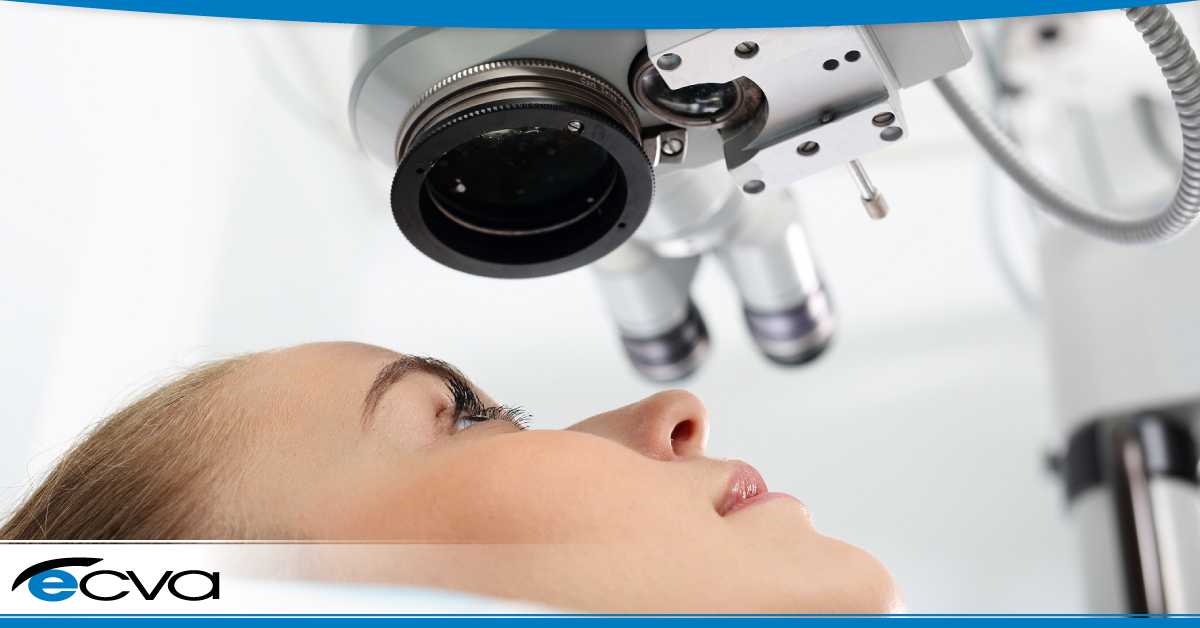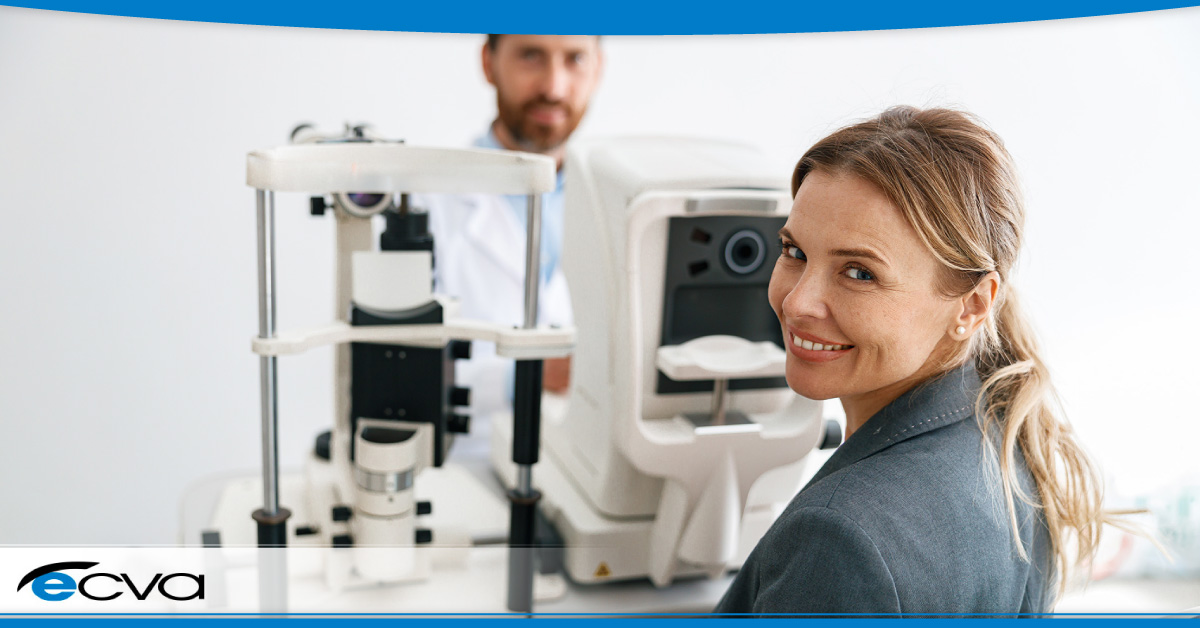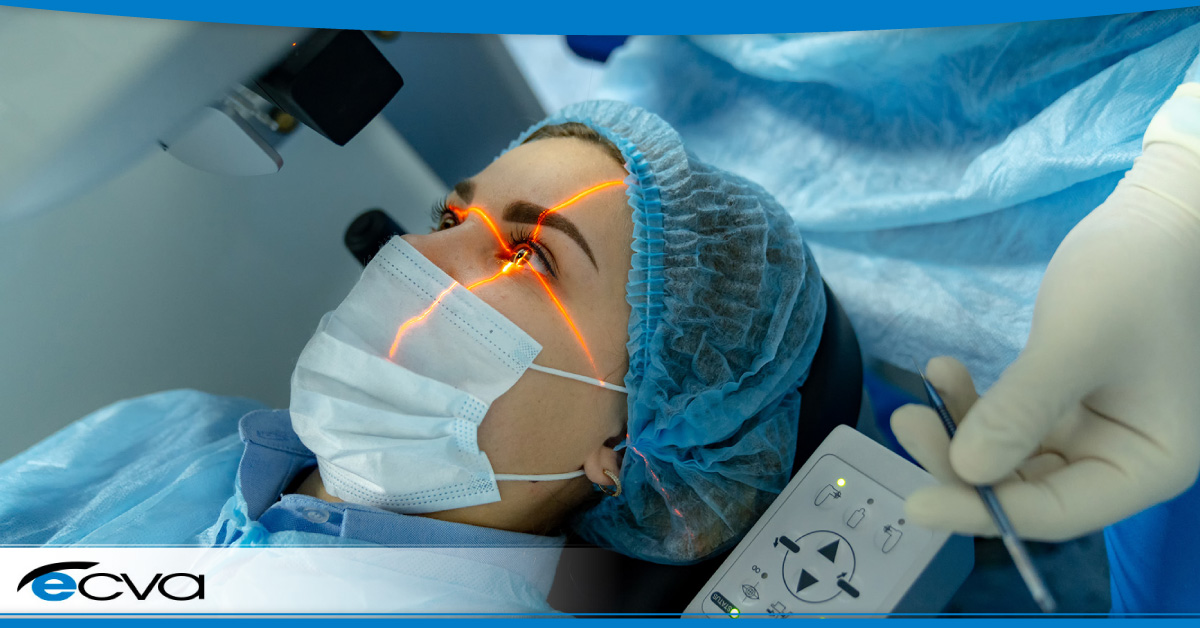Buffalo, New York, boasts a vibrant community of ophthalmologists dedicated to providing top-tier eye care services. Eye Care & Vision Associates (ECVA) is proud to be a member of this robust medical community. From addressing common conditions like cataracts to offering advanced refractive LASIK surgeries, Buffalo ophthalmologists remain committed to enhancing our patients’ vision and quality of life. In this guide, we’ll delve into the various ophthalmological procedures available in Buffalo, covering everything from cataract surgery to LASIK and beyond.
What Do Ophthalmologists in Buffalo, NY Do?
Ophthalmologists in Buffalo, NY, are medical doctors specializing in diagnosing, treating, and managing eye diseases and disorders. They undergo extensive training to perform a wide range of procedures to preserve and improve vision. Not to be confused with optometrists, who provide eye exams, ophthalmologists are doctors of medicine (MD) or doctors of osteopathy (DO) specializing in diagnosing and treating eye disorders and diseases. Buffalo ophthalmologists can handle a variety of eye-related conditions, such as:
- Age-related macular degeneration
- Diabetes-related retinopathy
- Glaucoma
- Posterior vitreous detachment (PVD)
- Presbyopia
When to See a Cataract Ophthalmologist in Buffalo
Cataracts are a common age-related condition characterized by clouding the eye’s natural lens, leading to blurry vision and difficulty seeing clearly. Here are the typical symptoms of cataracts:
- Clouded, blurred, or dim vision: You may notice that your vision becomes hazy or less sharp. Objects might appear less distinct.
- Trouble seeing at night: Cataracts can make it challenging to see clearly in low-light conditions, such as during the night.
- Sensitivity to light and glare: Bright lights or glare from sunlight or artificial sources can be bothersome.
- Need for brighter light: You might need more light than usual for reading or other activities.
- Seeing “halos” around lights: Some people with cataracts perceive halos or circles around light sources.
- Frequent changes in eyeglass or contact lens prescription: As cataracts progress, your corrective lens prescription may need more frequent adjustments.
- Fading or yellowing of colors: Colors may appear less vibrant or reflect a yellowish tint.
Remember that cataracts usually develop gradually, and most age-related cataracts progress over time. If you experience any of these symptoms, it’s essential to seek evaluation by an eye care professional. Regular eye exams can help detect cataracts early and guide appropriate management.
If you suspect cataracts or have concerns about your vision, consider scheduling a comprehensive eye examination with a Buffalo ophthalmologist. They can provide personalized advice and recommend appropriate treatment options if necessary.
What are Cataracts and How Do They Affect Vision
Cataracts are a common eye condition that affects the lens of the eye. More than 20 million Americans over the age of 40 have this condition.
The eye’s lens is the transparent window through which you see the world. A cataract clouds that lens, making your vision like looking through a frosty or fogged-up window. Clouded vision can make reading, driving at night, or seeing expressions on people’s faces more difficult. If you have cataracts, you may experience clouded or blurred vision and problems seeing at night. You may see halos around lights and be sensitive to bright light or glare. How you perceive colors may be affected, and you may experience headaches. If you have any of these symptoms, seeing an ophthalmologist in Buffalo is essential. Cataracts are a progressive disease that can lead to blindness if left uncorrected.
Most cataracts develop due to natural changes in the eyes as we age. However, other risk factors, such as a family history of cataracts, diabetes, or even the long-term use of certain medications, such as steroid eye drops, can cause this disease to develop.
Cataracts can be treated effectively through surgery, by replacing the natural lens with an artificial lens. If you experience any symptoms, consult ophthalmologists in Buffalo for proper evaluation and care.
Overview of Cataract Surgery
More than six million Americans have had successful cataract surgery. Cataract surgery is a common and highly effective procedure that removes and replaces the clouded lens with a clear artificial lens called an intraocular lens (IOL). During the surgery, the ophthalmologist makes a small incision in the eye, breaks up the cloudy lens using ultrasound technology, and inserts the new IOL.
Benefits and Outcomes of Cataract Surgery
Cataract surgery is known for its remarkable success rate in restoring clear vision and improving quality of life. On average, 95% of patients experience clearer vision after their surgery, and complications from the procedure are very low. Post-surgery patients often experience enhanced visual acuity, reduced dependence on glasses or contact lenses, and improved overall well-being following the procedure.
When to See an Ophthalmologist for LASIK Surgery in Buffalo
LASIK surgery is a popular refractive procedure designed to correct common vision problems such as nearsightedness, farsightedness, and astigmatism. If you’re tired of relying on glasses or contact lenses to see clearly, it may be time to explore LASIK options with an experienced ophthalmologist in Buffalo.
LASIK and Its Role in Vision Correction
LASIK, or Laser-Assisted in Situ Keratomileusis, utilizes advanced laser technology to reshape the cornea, the transparent front part of the eye, to improve refractive errors and achieve clearer vision without corrective lenses.
How LASIK Works to Reshape the Cornea
To understand the LASIK procedure, you must understand a bit of eye anatomy, chiefly, understanding the cornea.
The eye cornea, often referred to simply as the cornea, is the transparent, dome-shaped outer layer covering the front of the eye. It is the eye’s primary refractive surface, responsible for focusing incoming light rays onto the retina, located at the back of the eye. The cornea plays a crucial role in the eye’s optical system, contributing to most of the eye’s focusing power.
During LASIK surgery, the ophthalmologist creates a thin flap in the cornea and uses a laser to reshape its underlying tissue, correcting the refractive error and improving visual clarity. The flap is then repositioned, allowing for rapid healing and minimal discomfort.
Who is a Candidate for LASIK Surgery
Ideal candidates for LASIK surgery are individuals over 18 years old with stable vision and healthy corneas. A thorough evaluation by an ophthalmologist will determine whether LASIK suits your specific needs and vision goals.
LASIK Procedure Details and Recovery Process
LASIK surgery is typically performed as an outpatient procedure and takes only a few minutes per eye. Most patients experience immediate improvements in vision and can resume normal activities within a day or two following surgery, with minimal downtime.
Beyond Refractive Surgeries: Other Ophthalmological Procedures in Buffalo
In addition to cataract and LASIK surgeries, ophthalmologists in Buffalo offer a range of other procedures to address various eye conditions and disorders.
Glaucoma Surgery
Glaucoma surgery aims to reduce intraocular pressure and prevent further damage to the optic nerve, helping preserve vision and slow disease progression.
Corneal Transplants
Corneal transplants involve replacing damaged or diseased corneal tissue with healthy donor tissue to restore vision and alleviate symptoms such as pain and visual distortion.
Retinal Surgeries
Retinal surgeries treat conditions affecting the retina, such as retinal detachment, macular degeneration, and diabetic retinopathy, and may involve techniques such as vitrectomy and laser photocoagulation.
Factors to Consider Before Undergoing Ophthalmological Procedures in Buffalo
Before undergoing any ophthalmological procedure in Buffalo, it’s essential to consider several factors to ensure the best possible outcomes and minimize risks.
Candidacy Criteria, Risks, and Potential Complications
Understanding your candidacy for a specific procedure and the associated risks and potential complications is crucial for making informed decisions about your eye care. While eye surgery generally has a low complication rate, talk with your Buffalo ophthalmologist about your options and the risks involved.
Importance of a Thorough Consultation with an Ophthalmologist in Buffalo
A thorough consultation with an experienced ophthalmologist in Buffalo will help determine the most suitable treatment plan tailored to your needs and vision goals.
Tips for Selecting a Qualified and Experienced Surgeon
When selecting an ophthalmologist for your eye care needs, look for qualifications, experience, and a track record of successful outcomes. Personal recommendations and online reviews can also provide valuable insights into the surgeon’s reputation and patient satisfaction.
Schedule a Consultation with the Top Ophthalmologists in Buffalo, NY Today
Choosing an ophthalmologist in Buffalo requires carefully evaluating the best practice and surgeon to help with your condition. If you’re considering cataract surgery, LASIK, or any other ophthalmological procedure in Buffalo, NY, don’t hesitate to schedule a consultation with one of the top ophthalmologists in the area, Eye Care & Vision Associates (ECVA).We deliver the highest quality healthcare in the region from multiple office locations that make it convenient to visit us.
Investing in your eye health today can lead to a lifetime of clear vision and improved quality of life. Find out why our patients partner with ECVA to take care of their eyes at all the stages of their lives. Contact our ophthalmologists today.










